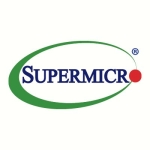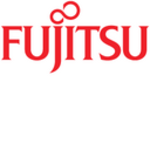What is our primary use case?
Our primary use case is virtual desktop infrastructure. We use them to run VMware Horizon View for engineering applications and higher-end desktop users.
The primary workload is workstations using NVIDIA Tesla cards. It helps our engineering students to run CAD applications no matter where they are on campus, instead of having to go to a lab to do it.
How has it helped my organization?
The biggest example is that, instead of having to buy a bunch of workstations - 29 or 30 for a room - we can just implement 50 VDIs and students can use them anywhere. Students don't particularly like to come to a lab just to do work. They like to work collaboratively. This gives them the ability not only to do that, but it also gives them the ability to do it in a classroom. Even if they're in a regular classroom, they have access to higher-performance machines to do simulations and that kind of stuff.
In terms of our IT landscape, it's self-managing. It's self-contained. And because it's OneView, it's the same management interface as we use for the rest of the infrastructure, so I only have to learn one tool.
When it comes to implementing new business requirements, if they need more machines, or the number of students increases in that particular discipline, it's very easy to replicate our current machines. Getting things online and being able to provide those workstations is much faster. Once we have it up and running, to deploy new virtual machines there is probably a 90 percent decrease in the time needed to get them up to speed.
Also, as far as the efficiency of our IT infrastructure team goes, we don't have a lot of bodies on our team. The easier things are and the more consistent they are, the more we can do more with less.
In addition, Synergy has reduced our cost of operations. It costs less to run that infrastructure than 40 to 50 standalone workstations. I would say our total cost of ownership is decreasing.
What is most valuable?
The most valuable feature is its composable infrastructure. Everything I need is in the box. Manageability is through OneView, so I can get all the information about the box itself at any time I want.
Set up is easy. If I need to add additional capacity, I can just slide new blades in and get the profiles from the previous ones. It's easy to expand.
What needs improvement?
I'd like to see the firmware updates, as well as the built-in OneView and imager in Composer, become a little more powerful and faster.
I would expect that newer blades that would go in it would have newer processors and be faster. It's pretty flexible with storage. There are new solutions on the storage front, that are going into it as well. I expect that portfolio to increase, just like with the rest of the solutions they have.
Other than that, I think everything's great.
Buyer's Guide
HPE Synergy
April 2025
Learn what your peers think about HPE Synergy. Get advice and tips from experienced pros sharing their opinions. Updated: April 2025.
850,671 professionals have used our research since 2012.
What do I think about the stability of the solution?
It's been very stable. We've had no issues. It's been rock-solid.
What do I think about the scalability of the solution?
It easily scales. You can put three frames in a rack and they all interconnect, so it's not an issue there.
How are customer service and support?
Technical support is very good. We haven't really had to use it a lot, but the times we have had to use it, it's been very good.
Which solution did I use previously and why did I switch?
We came to a point where we had to start replacing a bunch of workstations. We sat down and thought about what the best path forward would be and what flexibility we wanted in the product. Once we worked through that, this solution was a no-brainer.
How was the initial setup?
The initial setup was straightforward. We've been using HPE products for a long time. We've been using blade servers for a while. We were coming off a c7000 solution, so it was really easy to understand what they were doing and just jump right in. It wasn't a big, major shift. Just an evolution to a better product.
What about the implementation team?
We used a reseller - NWN. Our experience with them has been very good.
What was our ROI?
We have seen a huge ROI. Instead of having to buy 50 workstations - and we didn't have room for them, where we would need another classroom or another area - we didn't have to invest in any of that. Air conditioning was already taken care of. Power was already taken care of because it's in the data center, so we didn't need to worry about outfitting a classroom with furniture, new workstations, and everything else.
Which other solutions did I evaluate?
We've been an HPE shop for a long time, so we really didn't have any other vendors. We knew everything was rock-solid. It was an environment that we were comfortable with. All my staff is trained in it and it didn't make any sense for us to really look at any other product.
But honestly, I don't think there's any other product that is at that level today. Most products are probably two to three years behind. I had no problems. I was very comfortable with it.
What other advice do I have?
Make sure you understand the whole solution. If you're used to doing things the old, manual way, make sure you understand what OneView does, and how it can automate and orchestrate bringing the platform up to speed, and then, what happens after that. If you do that, you'll easily see that it's a big time-saver and it's much easier to manage.
The biggest lesson I learned from using this solution is that it is a lot simpler than what I thought it was going to be like, when we were going to deploy.
I would rate Synergy as ten out ten because
- it's easy to use
- rock-solid
- straightforward to deploy
- easy to expand.
Disclosure: I am a real user, and this review is based on my own experience and opinions.










